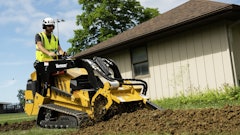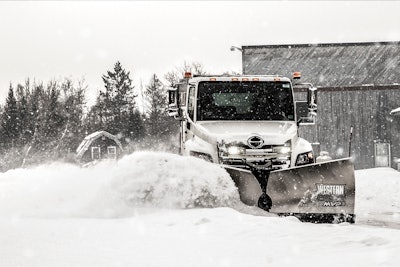
Snow contractors have quite a few factors to keep in mind when purchasing new snow and ice equipment for their trucks. To find the perfect match, they need to consider the size and gross vehicle weight rating (GVWR) of the truck, as well as the type of plow they're looking to purchase. Here are a few key points of advice to help purchase plows and attachments this season.
Know the Gross Vehicle Weight Rating
Whether contractors are seasoned veterans or planning on venturing into the snow and ice removal business, they want to make sure to fit the vehicle with the right size equipment. Either extreme is dangerous: If they go too small, the plow may not hold up; too big, and they’ll risk damage to the truck, not to mention the legal ramifications if any accident takes place. Either outcome would be costly, and nobody wants to carry around that kind of regret. This is where the gross vehicle weight rating comes into play.
GVWR is important because different plow styles and types are grouped according to vehicle class rating. Once users figure out what these numbers are, they’ll be able to narrow down their options and make the best purchase for their setup. The GVWR represents the maximum weight that a vehicle’s suspension can support. This includes the weight of fuel, passengers and the vehicle itself. This rating is typically labeled in the doorframe or under the hood of a truck—as well as in the owner’s manual. The GVWR is the most important factor in fitting snow and ice equipment. In fact, there’s a common saying that “the GVWR can literally make or break a truck.”
Mind the Equipment Capacity
It’s almost equally as important to pay attention to current or future equipment specs.
By ignoring the specs, it’s possible for a contractor to exceed his truck’s GVWR even before a grain of salt is placed in the hopper. To avoid causing irreparable damage, contractors should gather these numbers ahead of time, well before taking on any new equipment.
For example, when it comes to spreaders, it’s a good idea to factor in the number, size and location of the accounts contractors service. A few small accounts will require a drastically different capacity level than that of several large commercial properties. Also, depending on what options are available for de-icing material, contractors will want to consider what method they plan to use for refilling when needed. This will help when deciding which size spreader will be the most cost effective in the long run.
Choose The Right Plow
The last step is to start looking at the different types of plows and what they can do.
Again, it’s important for contractors to be realistic in knowing the accounts they service and what their needs will be for the season. This will help determine how they will be using the plow and which style makes the most sense for the situation. The property types contractors maintain, the vehicles they use and the average snowfall in their area all play a major role in this decision. Here are some popular styles and some of the distinctions between each in what they can and can’t do.
Straight Blade Plows
Simple in design and the most affordable option of the three styles, straight blade plows tend to be the most popular option each year.
● Easy to operate: The straightforward design with easy up, down, left and right operation makes a straight blade the perfect choice for anyone new to plowing. These types of plows are generally the go-to for plow drivers at every level because of the simple ability to get the job done.
● Simple maintenance: Since there are fewer moving parts on a straight blade compared to a winged or v-plow, less can go wrong, meaning fewer repairs and simpler maintenance.
● Job specific: Perfect for driveways, small properties and open lots with few obstacles.
● Regionality: Best for use in areas receiving two to three snow events each season, ranging from 1 to 6 inches.
V-Plow
Often compared to a Swiss Army Knife, v-plows are the most universal, with three modes that give drivers the flexibility needed to easily clear dense properties at a reasonable cost—typically priced between a straight blade and winged plow. If contractors only have one plow, they may want to choose this option.
● Versatility: The plow blade is hinged in the middle and uses hydraulic controls to adjust the blade from v-mode to straight mode to scoop mode. This allows the v-plow to push snow, haul snow and stack snow with ease.
● Efficiency: A v-plow easily changes from one mode to the other from the comfort of the vehicle cab.
- V-Mode: Easily break through deep, hard-packed snow
- Scoop: Increase snow stacking and hauling capacity by 30 percent
- Straight: Backdrag and windrow in large, open spaces
● Job Specific: Parking lots with various obstacles and tight areas or cities where space is limited, and snow professionals need the ability to stack snow high.
● Regionality: Ideal for areas that receive more than five storms a year, with at least one event dropping more than a foot of snow.
Winged Plow
The most efficient movers of snow, winged plows carry up to 30 percent more snow than a straight blade—but because of their complexities, they can be the most difficult to use.
● Versatility: Winged plows with full hydraulic control allow you to independently extend the wings. By windrowing on a left or right angle, snow pros can reduce snow spilloff and extend for a wider pass, directing snow into the moldboard for a cleaner scrape.
● Efficiency: With fully expanded wings, this style moves more snow than any other plow type. They are easily switchable from a standard blade size to an extra-wide blade size. By covering more space, snow contractors can reduce the number of passes to get the job done faster.
● Job specific: Perfect for large areas that have obstacles and narrow areas, like packed parking lots, outdoor storage areas with aisles and jobs where contractors need to quickly carry a lot of snow.
Regionality: Does best in highly populated and concentrated areas like large commercial or industrial parking lots where a wing plow can really shine.

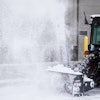

![Doosan Bobcat Wacker Neuson Stack 2ec Js Pb V6e[1]](https://img.greenindustrypros.com/mindful/acbm/workspaces/default/uploads/2025/12/doosan-bobcat-wacker-neuson-stack2ecjspbv6e1.CPyyz8ubHn.png?auto=format%2Ccompress&bg=fff&fill-color=fff&fit=fill&h=100&q=70&w=100)



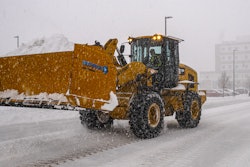

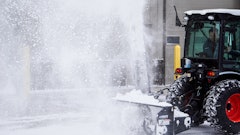

![Doosan Bobcat Wacker Neuson Stack 2ec Js Pb V6e[1]](https://img.greenindustrypros.com/mindful/acbm/workspaces/default/uploads/2025/12/doosan-bobcat-wacker-neuson-stack2ecjspbv6e1.CPyyz8ubHn.png?ar=16%3A9&auto=format%2Ccompress&bg=fff&fill-color=fff&fit=fill&h=135&q=70&w=240)
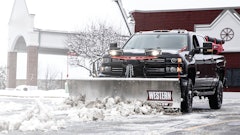
![Gravely Pro Turn Mach One My23 Dsc03139 Edit 1200x800 5b2df79[1]](https://img.greenindustrypros.com/mindful/acbm/workspaces/default/uploads/2025/10/gravely-pro-turn-mach-one-my23-dsc03139-edit-1200x800-5b2df791.BucBnDoN22.jpg?ar=16%3A9&auto=format%2Ccompress&fit=crop&h=135&q=70&w=240)
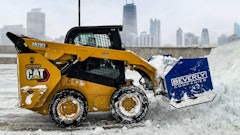
![Kubota Snow ah3 Sgv25ua[1]](https://img.greenindustrypros.com/mindful/acbm/workspaces/default/uploads/2025/10/kubota-snowah3sgv25ua1.bAUoUSziui.png?ar=16%3A9&auto=format%2Ccompress&bg=fff&fill-color=fff&fit=fill&h=135&q=70&w=240)


